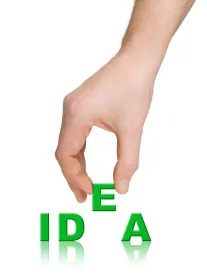We reviewed a sub-group of two hundred and four (204) IPRs filed by generic drug companies against pharmaceutical patents to assess PTAB outcomes and key trends in dealing with this technology field. The survey captured IPR filings by fourteen (14) of the most active generic petitioners among the world’s top-20 generic drug companies. This study updates and expands findings from our earlier survey of this subgroup (see the June 2016 post here). Detailed findings are presented in Fig. 1 below, as well our key findings in the following sections. One surprising trend revealed by this survey is a high institution rate (75%) against pharmaceutical patents, well above the average for all technologies.
High Institution Rate, but Lower Invalidation Rate in Final Decisions
Examining this group of IPRs, we found a surprisingly high institution rate of seventy five percent (75%), which is eight percent (8%) higher than the statistics from our prior survey and is at the high end of institution rates across all technologies. Notably, generic companies are achieving a significantly higher institution rate than the sixty three percent (63%) institution rate for the combined “biotechnology/pharma” category published by the USPTO in November 2016.
The current data pool has forty one (41) cases that have reached the final written decision (FWD) stage (see Fig. 2 below), allowing us to produce more reliable statistics on the invalidation rate. Particularly, the PTAB finds all claims patentable in thrifty nine percent (39%) of the cases, and all claims unpatentable in fifty nine percent (59%) of the cases. In a minority two percent (2%) of the cases, some claims are found patentable, while others unpatentable. The sixty one percent (61%) invalidation rate (combined all and some claims unpatentable) is significantly lower than the average eighty percent (80%) invalidation rate for other technologies. Therefore, while it may be easier for generic companies to have their IPRs instituted, the overall likelihood for them to walk away from the trial with at least one claim invalidated is actually lower. However, it is important to consider the following additional finding that there is also a high rate of settlement, which may skew the adverse final decision number lower.
High Incidence of Settlement
The settlement rate remains high at about twenty two percent (22%) (combined pre- and post-institution settlements out of total outcomes) since our prior survey, with pre-institution settlements counting for fourteen percent (14%) of all outcomes (see Fig. 2 below). When multiple related patents are under attack by the same petitioner, which may be more common for pharmaceutical IPRs, patent owners tend to defend or settle them en masse. Particularly, twenty eight (28) out of the forty four (44) total settlements in the current data pool are between parties litigating multiple related patents before the PTAB. This kind of “batch” settlement may account for the higher settlement rate in our survey.
High Incidence of Parallel Litigation
Out of the 205 pharma IPRs we surveyed, 73% (150) involved a parallel litigation where the IPR petitioner was a defendant in the litigation. In some cases, there were multiple parallel litigations involving the patent that was the subject of the IPR where the defendants chose not to file IPRs or join existing IPRs of the patent.
Majority Engaged Specialist IPR Firm in Addition to or in Place of Litigation Counsel
Out of the 150 pharma IPRs with parallel litigation, 26% (39) used a combination of a new firm as IPR counsel together with the litigation counsel who represented the patent owner, 17% (25) used a different firm as IPR counsel and litigation counsel was not listed of record in the IPR, and 57% (86) used the same firm for IPR counsel and the parallel litigation.
On the petitioner’s side, out of the 150 pharma IPRs with parallel litigation, 35% (52) used a combination of a new firm as IPR counsel together with the litigation counsel, 29% (43) used a different firm as IPR counsel and litigation counsel was not listed of record in the IPR, and 37% (55) used the same firm for IPR counsel and the parallel litigation.
Thus, in the case of patent owners, 43% chose to involve an additional firm in the IPR. In the case of petitioners, 64% chose to involve an additional firm in the IPR.
A variety of factors may be behind the decisions to involve a specialist firm for the IPRs in addition to or instead of litigation counsel. The firm handling the litigation may not have sufficient IPR expertise. There may be a protective order that contains a prosecution bar, which may require a wall between the attorneys handling the IPR and the litigation (such walls can be implemented within a single firm in cases where an experienced IPR counsel is available in the same firm if they are not involved in the litigation). In all cases where an additional firm is involved, it is critical to coordinate strategy and keep arguments consistent.
The following figure shows the number of IPR petitions filed by the most active generic drug company petitioners to date:
Fig. 1: Number of IPR Petitions by Generic Drug Company Petitioners

The following figure shows the outcomes of IPR petitions filed by the most active generic drug company petitioners to date:
Fig. 2.: Outcome of IPR Petitions by Generic Drug Company Petitioners





 />i
/>i

